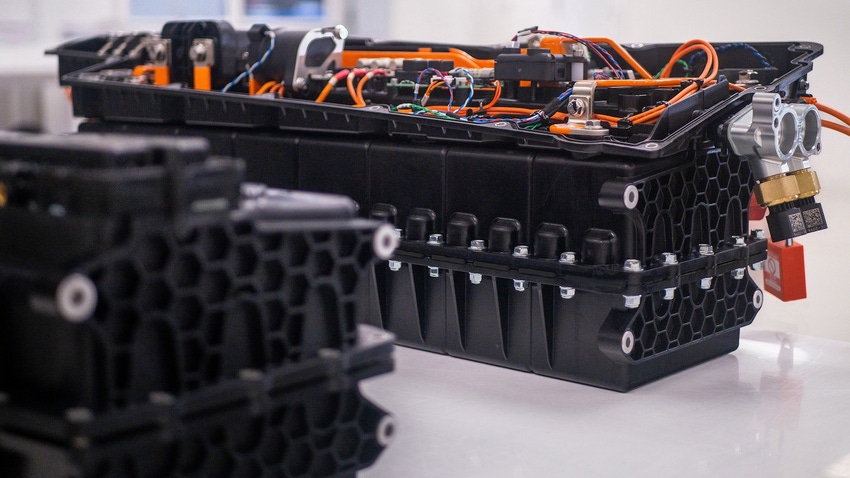Lightweight, High-output Battery Powered by Engineering Plastics
Polyamides from BASF keep temperatures low in high-speed hybrid hypercar.
April 24, 2024

At a Glance
- BASF's Ultramid B3EG7 and Ultramid A3EG6 EQ are used by RML as housing material and cell holders in the battery unit.
- Immersion cooling improves battery system’s efficiency and service life.
- In-depth materials expertise and service offerings accelerate development.
Materials supplier BASF has supported RML Group in the development of an innovative, immersion-cooled battery for a high-performance hybrid “hypercar” that sets new performance and safety standards using next-generation plastic materials. The 800-V battery features a capacity of 4.2 kWh and a >100C discharge rate, while weighing in at less than 75 kg.
The extremely high power output, especially during rapid acceleration and regeneration, requires a cooling system capable of tempering heat generated by the cells. To prevent extreme temperatures and ensure a more even temperature distribution throughout the pack, immersion cooling is used, which greatly improves the entire battery system’s efficiency and service life. Two BASF polyamide (PA) plastics are employed in RML's battery unit.
Handling the heat.
Ultramid B3EG7 (PA 6 GF35) is utilized in both the housing for the battery unit itself and the housing of the high-voltage electrical components of the battery control system. This material is noted for its robustness and resistance to mechanical stress, which is particularly important for the battery housing. The design not only has to satisfy crash requirements, but also must pass the UNCE Reg 100.03 fuel fire test. Protected only by a thin carbon sheet, Ultramid B3EG7 passes the fire test without damage to the housing, making it ideal for this application.
Ultramid A3EG6 EQ (PA 66 GF30) is used for the individual battery cell holders within the battery housing. The Ultramid EQ grades (EQ = electronic quality) are extremely pure-grade, meaning they contain hardly any electrically active or corrosion-accelerating components, yet still deliver outstanding heat aging resistance. In contact with the dielectric fluid, the material minimizes any kind of diffusion out of the material. Since dielectric fluids are used for electrical insulation and as coolants in high-voltage applications, contamination by contact materials must be avoided at all costs.
A partnership of strength.
The RML name is synonymous with engineering achievements in the field of luxury and racing cars. The company is also a pioneer in the electrification of its automotive fleet through its development, design, and production of innovative battery systems. Particularly noteworthy is the close cooperation between BASF and RML, even at the development stage, and the early involvement of BASF as a materials supplier in decision-making processes.
“RML needed to explore state-of-the-art materials for battery systems to meet the mass and structural targets set by customers for high-performance applications. We worked closely in collaboration with BASF to achieve the desired properties, and I look forward to working together evolving and enhancing material development with BASF on future projects,” said James Arkell, head of powertrain at RML.
Thanks to its extensive expertise in the new battery sector and in the field of electrical and electronic materials, BASF managed to significantly accelerate the development of the overall battery unit. The rapid recommendation of suitable materials as well as the timely, global delivery of sample quantities were instrumental in ensuring that RML was able to meet its ambitious schedule for this project.
"Our in-depth materials expertise and commitment to sustainable solutions enable us to meet customer requirements in the shortest possible time and advance electrification in the transport sector," said Jasmina Simon, BASF’s plastics materials expert for e-mobility.
In addition to its materials solutions, BASF also provides comprehensive services such as component simulation. Ultrasim, for example, can be used to develop components for specific requirements, so as to create heavy-duty, efficient, and lightweight custom components.
About the Author(s)
You May Also Like




